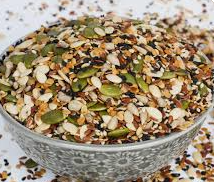Milk is a staple food in many households, and it contains a variety of nutrients that are essential for good health, such as calcium, vitamin D, and protein. However, the fat content in milk is a controversial topic, with some experts advocating for low-fat or skim milk while others believe that full-fat milk is more beneficial. In this blog, we will explore the different types of fat content in milk, their health implications, and how to choose the right type for you.
- Whole milk: Contains about 3.5% fat, making it the highest fat content milk.
- Reduced-fat milk: Also known as 2% milk, contains about 2% fat.
- Low-fat milk: Contains about 1% fat.
- Skim milk: Also known as fat-free milk, contains less than 0.5% fat.
- Non-dairy milk: There are various non-dairy milk options available such as soy, almond, coconut, and oat milk. The fat content in these milk types can vary, depending on the processing method and added ingredients.

1. Whole milk
Whole milk is a type of milk that has not undergone any fat removal. It contains approximately 3.25% milk fat and is a good source of calcium, vitamin D, and protein. In this article, we will explore the health benefits, side effects, and conclusion of whole milk consumption.
1.1. Health Benefits
- Provides essential nutrients: Whole milk is rich in essential nutrients like calcium, vitamin D, and protein. Calcium is essential for strong bones and teeth, and vitamin D helps in the absorption of calcium.
- Promotes weight loss: Contrary to popular belief, consuming whole milk can aid in weight loss. The presence of healthy fats in whole milk helps in promoting satiety and reducing hunger pangs.
- Enhances heart health: Whole milk consumption has been linked to lower blood pressure and a reduced risk of heart disease.
- Boosts immunity: The vitamins and minerals present in whole milk help in boosting the immune system and promoting overall health.
1.2. Side Effects
- High in calories: Whole milk is high in calories and can lead to weight gain if consumed in excess.
- May cause allergies: Some individuals may be allergic to milk proteins and may experience symptoms like itching, hives, and digestive distress.
- Lactose intolerance: Individuals who are lactose intolerant may experience digestive discomfort after consuming whole milk.
1.3. Conclusion
Whole milk is a nutritious beverage that provides essential nutrients to the body. However, it is high in calories and may cause digestive discomfort in some individuals. If you are lactose intolerant or have allergies, it is best to avoid consuming whole milk. Otherwise, moderate consumption of whole milk can be a part of a healthy and balanced diet.
2. Reduced-fat milk
Reduced-fat milk, also known as 2% milk, is a popular choice for those who want to reduce their calorie and fat intake but still enjoy the taste and nutritional benefits of milk. Here are the health benefits, side effects, and conclusion of reduced-fat milk:
2.1. Health Benefits
- Reduced calorie intake: Reduced-fat milk has fewer calories than whole milk, which can be beneficial for those trying to maintain a healthy weight or lose weight.
- Lower fat content: The lower fat content in reduced-fat milk can help lower cholesterol levels and reduce the risk of heart disease.
- Good source of calcium: Milk, regardless of its fat content, is a good source of calcium, which is essential for healthy bones and teeth.
2.2. Side Effects
- Lower nutrient density: Reduced-fat milk has a lower fat content, which means it may have a lower nutrient density compared to whole milk.
- Added sugars: Some brands of reduced-fat milk may have added sugars to improve the taste, which can increase calorie and sugar intake.
- Lactose intolerance: Reduced-fat milk still contains lactose, which can be problematic for those who are lactose intolerant.
2.3. Conclusion
Reduced-fat milk can be a good option for those who want to reduce their calorie and fat intake but still enjoy the taste and nutritional benefits of milk. However, it is important to choose a brand that does not have added sugars and to consider other sources of nutrients if you are relying solely on reduced-fat milk. Those with lactose intolerance should also be cautious when consuming any type of milk. Overall, reduced-fat milk can be a healthy part of a balanced diet when consumed in moderation.
3. Low-fat milk
Low-fat milk is a type of milk that has had some or most of the fat removed. The amount of fat in low-fat milk varies, but it typically contains around 1-2% fat. Here are some of the health benefits, side effects, and conclusions of low-fat milk:
3.1. Health Benefits
- Low-fat milk is a good source of calcium, which is essential for strong bones and teeth.
- Low-fat milk is also a good source of vitamin D, which helps the body absorb calcium and supports immune system function.
- Low-fat milk is lower in calories than whole milk, making it a good choice for those looking to maintain a healthy weight or lose weight.
- Low-fat milk contains protein, which is important for building and repairing tissues in the body.
3.2. Side Effects
- Some people may not like the taste of low-fat milk, as it can be less creamy and flavorful than whole milk.
- Low-fat milk may not be as satisfying or filling as whole milk, leading to increased hunger and snacking.
- Low-fat milk may contain added sugars or artificial sweeteners, which can contribute to health problems such as obesity and diabetes.
3.3. Conclusion
Low-fat milk can be a good choice for those looking to reduce their fat intake or maintain a healthy weight. It provides important nutrients such as calcium, vitamin D, and protein, while being lower in calories than whole milk. However, it may not be as satisfying or flavorful as whole milk, and may contain added sugars or artificial sweeteners, so it is important to choose low-fat milk without added sugars or sweeteners whenever possible.
4. Skim milk
Skim milk, also known as nonfat milk, is a type of milk that has had most of its fat content removed. It is a popular choice for people who are looking for a low-fat or low-calorie milk option. Skim milk is widely available and is commonly used in a variety of recipes, including smoothies, soups, and baked goods.
4.1. Health Benefits
- Low in calories: Skim milk is low in calories and can be a good option for people who are trying to lose weight or maintain a healthy weight.
- Good source of protein: Skim milk is a good source of protein, which is important for building and repairing muscles, skin, and other tissues in the body.
- High in calcium: Skim milk is high in calcium, which is important for building and maintaining strong bones and teeth.
- Low in saturated fat: Skim milk is low in saturated fat, which can help reduce the risk of heart disease and other health problems.
4.2. Side Effects
- Lower in vitamins: Skim milk has had most of its fat removed, which also means that some of the fat-soluble vitamins, such as vitamin D, are also removed. Some brands of skim milk are fortified with vitamin D, but not all.
- Less flavor: Skim milk has a less creamy and less rich flavor than whole milk, which some people may find less satisfying.
- Higher in sugar: Some brands of skim milk may contain added sugars or sweeteners to improve the taste.
4.3. Conclusion
Skim milk can be a healthy choice for people who are looking for a low-fat or low-calorie milk option. It is a good source of protein and calcium and is low in saturated fat, which can help reduce the risk of heart disease and other health problems. However, some brands of skim milk may be higher in sugar and lower in vitamins than whole milk, so it is important to read labels carefully and choose a brand that is fortified with vitamin D and does not contain added sugars.
5. Non-dairy milk
Non-dairy milk, also known as plant-based milk, is a type of milk that is made from plants such as soy, almonds, coconut, oats, rice, and hemp. These types of milk are a popular alternative to cow’s milk for people who are lactose intolerant, vegan, or simply looking for a different taste or nutritional profile.
5.1. Health Benefits
- Low in calories: Non-dairy milk is generally lower in calories than cow’s milk, making it a great option for people who are trying to manage their weight.
- Rich in nutrients: Many non-dairy milks are fortified with vitamins and minerals such as calcium, vitamin D, and vitamin B12.
- May reduce inflammation: Some studies suggest that certain types of non-dairy milk, such as almond milk, may have anti-inflammatory properties that can help reduce inflammation in the body.
- Lactose-free: Non-dairy milk is a great option for people who are lactose intolerant or have a milk allergy.
5.2. Side Effects
- Can be high in sugar: Some non-dairy milks may contain added sugars, which can contribute to weight gain and other health problems.
- May contain additives: Some non-dairy milks may contain additives such as thickeners, emulsifiers, and stabilizers, which may not be desirable for some people.
- Not suitable for people with nut or soy allergies: Many non-dairy milks are made from nuts or soy, which can be a problem for people with allergies to these foods.
5.3. Conclusion
Non-dairy milk can be a healthy alternative to cow’s milk, but it is important to choose a variety that is low in added sugars and additives. It is also important to ensure that the milk is fortified with essential vitamins and minerals. As with any food, it is important to read labels carefully and choose the product that is right for you. Check my blog to know more about Non Dairy Milk.
2 responses to “Milk and its Fat Content”
-
[…] milk (Vegan Milk) refers to plant-based milk alternatives that are used as a substitute for traditional dairy milk. Some common non-dairy milks include almond milk, soy milk, coconut milk, rice milk, and oat […]
-
[…] 1/4 cup whole milk […]




Leave a Reply